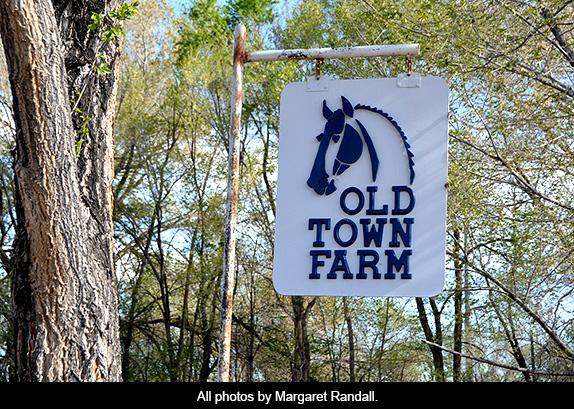
If you’re heading north from Central Avenue on the Rio Grande bike trail, turn right on Mountain Road and then left at the Reginald Chavez elementary school. The street is Montoya. Ignore the Dead End sign and curve around to the left. Turn in at the Old Town Farm sign and you’ll find yourself in a magical space: fields of organic vegetable and herb gardens, fruit trees bearing everything from several different types of apples to peaches and Asian pears, a large raspberry patch, onions, bell peppers, corn, and proud New Mexican green chile.
There are several houses built at different times in the life of this property, an old red barn, and a 1939 green Ford truck that has been lovingly restored and maintained. Depending on the season, a gazebo is surrounded by lovely wisteria, orange day lilies, and daffodils. Anchoring it all is a large food trailer. If you arrive mid-morning, in addition to the rich scent of good coffee you may smell a dish or two made from fresh produce. The day we visited individual quiches were on the menu, along with a kale and potato soup.
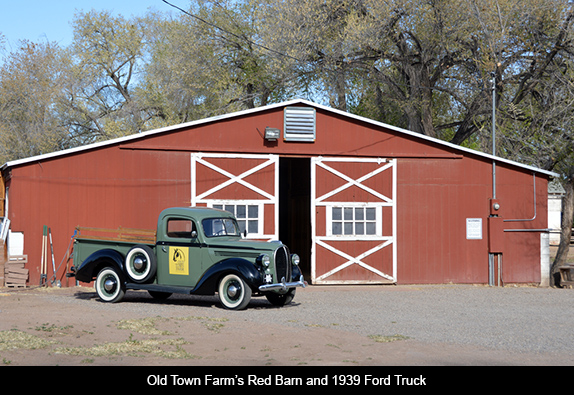
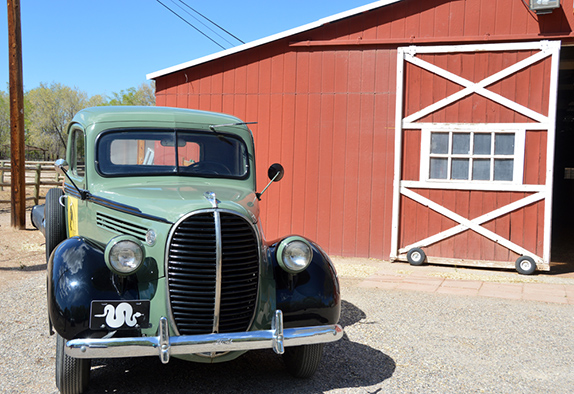
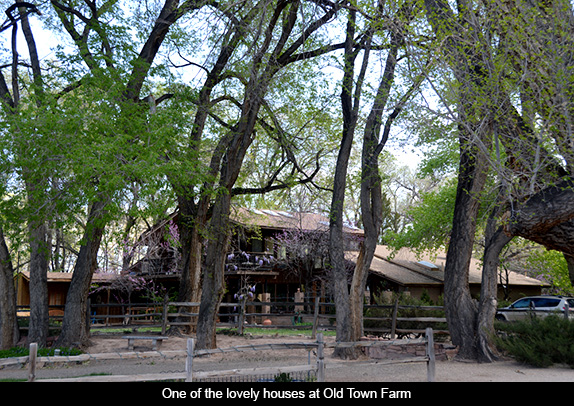
Additional services include large “his” and “hers” restrooms, fitted out with first aid kits, and a stand where simple bike repairs can be made. Scattered among beds of vegetables and herbs are a few tables with chairs. Cyclists lean their bikes against the fence, order a cup of coffee or other sustenance, and sit at the tables to renew energy for the rest of their ride, chatting and enjoying the surroundings. Behind the barn, several horses are reminiscent of the days when this was a horse motel boarding up to 30 overnighters at a time. I was intrigued by a little hand-painted wooden chest standing under a tree, a weathered sundial, and a unique sun and moon weather vane atop a tall pole.
Old Town Farm is the welcoming abode of longtime Albuquerque residents Linda Thorne and Lanny Tonning. They were both there the morning we visited, and sat down to answer our questions about the place. Lanny said he and Linda got together in the early 1980s. She owned two and a half acres at that time, land they added onto in subsequent years. She was interested in horses. They fixed the barn and eventually opened a horse motel and a dressage facility. Most of the youngsters doing dressage were female, and when Lanny and Linda had a daughter she too became interested in the sport. The horses were Westphalians and Hanovarians.
But Lanny told us, wryly, “there’s a lot of animal feed in our gas tanks these days.” Hay, that once cost $2 a bale, now goes for $18. The horse business was one of many victims of the economic crisis that favors corporate America at the expense of mom and pop endeavors. As the couple got older, gardening gradually replaced the horses. Their daughter eventually sold her horse to get money for college.

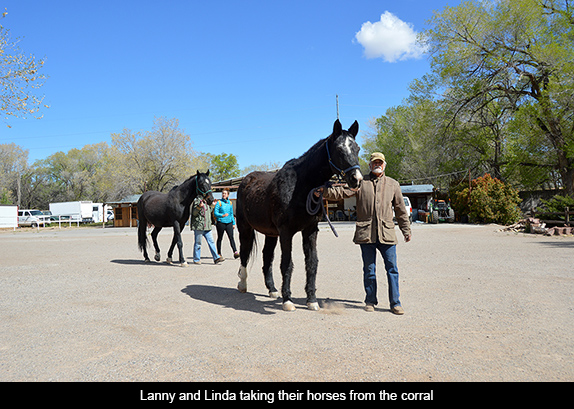
Clearly Linda and Lanny are people who do whatever they do with intelligence and passion. Lanny smiled as he described how his wife’s “inner gardener emerged.” He said she is the one with the green thumb; he likes tractors and all things mechanical. As they had success with one crop after another, friends began coming by on Wednesday afternoons. They would pick produce and prepare a communal meal. By the time they were harvesting five to six hundred pounds of tomatoes each June, it was too much to sell at the local growers market. They asked neighbors if they would be interested in participating in a subscription garden, and the answer was overwhelmingly affirmative.

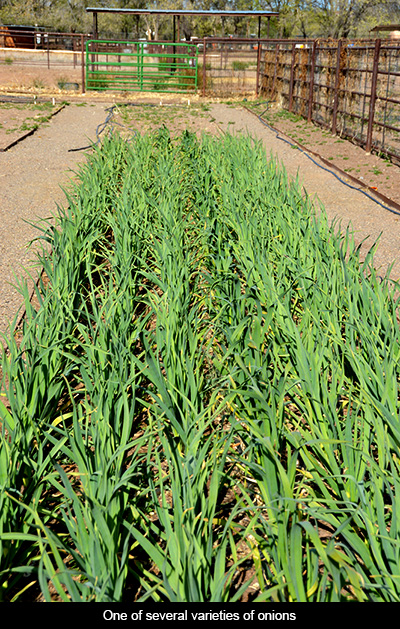
When they were still selling at the growers market, though, Lanny said he began noticing that the cyclists who frequented the market were buying lots of coffee at Java Joe’s across the street. Why not make and sell their own coffee, and invite those same cyclists to stop buy, get a cup, and stock up on produce? Meanwhile, one of Linda’s sisters was living in Beijing and getting interested in the preparation of all sorts of exotic Chinese dishes. Two years ago she began sending recipes home, and also seeds for some of the unusual Asian produce—which turned out to grow well in New Mexico soil. Linda and Lanny went to the county to find out what they’d have to do to open a small restaurant on the premises. The certification process sounded complicated, so they invited a food truck to set up and handle that part of the enterprise.

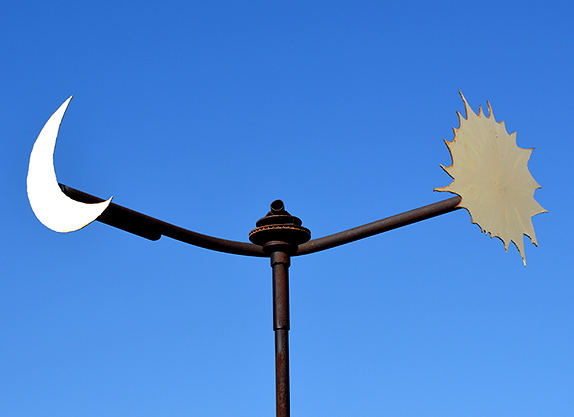
Albuquerque has 400 miles of bike trails. This web is definitely one of the great things about our city. The routes reach from the foothills into the valley, and border the river corridor, the Nature Center, Tingley Beach, and the Zoo. Paved trails, underpasses and overpasses make traveling the city’s bike paths safe and beautiful. But it is a place like Old Town Farm that makes biking in Albuquerque special.
Like all our land, this spot in the valley has been home to many different dwellers. Lanny and Linda told us records go back only as far as 1706, but that Tiguex peoples once lived here. They have found pieces of Ancestral Puebloan pottery along the ditch. The couple has unearthed old Spanish as well as US coins, pieces of ancient stoves and vehicles, among much else. One particularly interesting discovery was a watch fob from a Reclamation Conference held in the city in 1908, “probably at the old Alvarado Hotel.” Many people attended that conference, where the future of water in the west was discussed. The event’s ability to attract such a knowledgeable crowd turned out to be a big factor in New Mexico attaining statehood four years later.
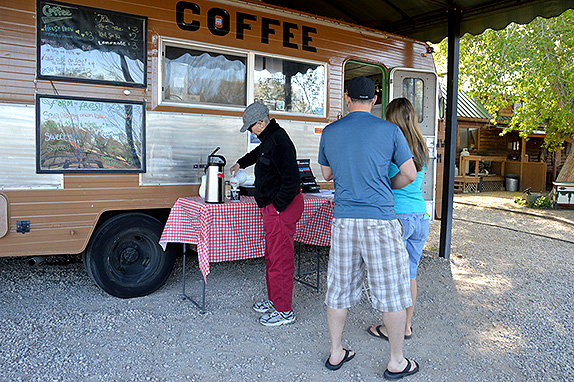
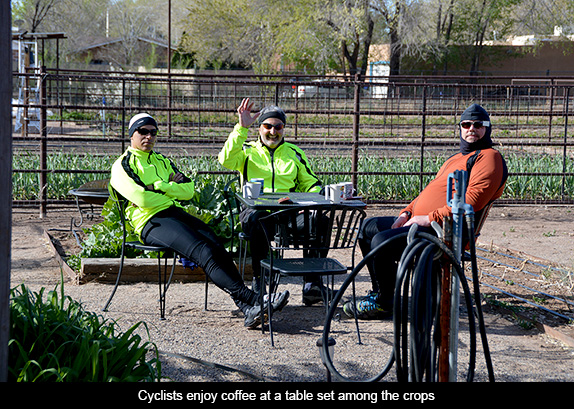
We asked Lanny and Linda if local cyclists are their main visitors, or if people come to Old Town Farm from other places as well. “From all over the world,” Lanny said. He mentioned the moviemakers our state has attracted over the past decade, many of whom have filmed there, as well as journalists writing for publications including Better Homes and Gardens and Tailwinds (a cycling magazine). “Just last week,” Lanny told us, “a French television show called Eschappes Belles did a story. That’s beautiful gardens or beautiful escapes, depending on your translation.”
The coffee was good, the atmosphere unusual and welcoming, and we left wondering how many such word-of-mouth destinations exist in a city that some predict is dying while others believe that places like this are proof that innovative blood still runs in Albuquerque’s veins.
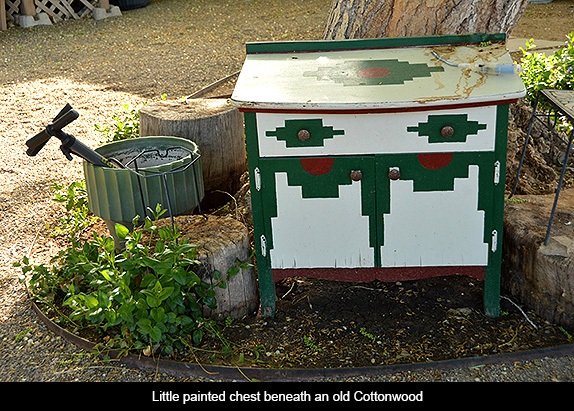
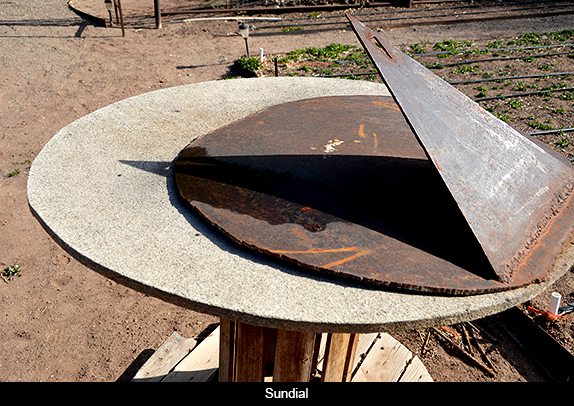

May 30, 2014